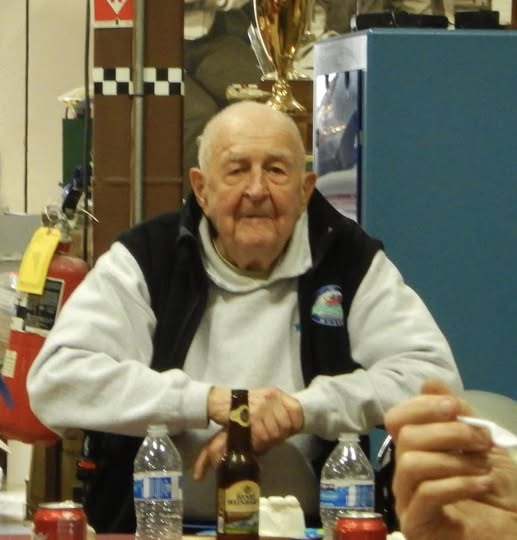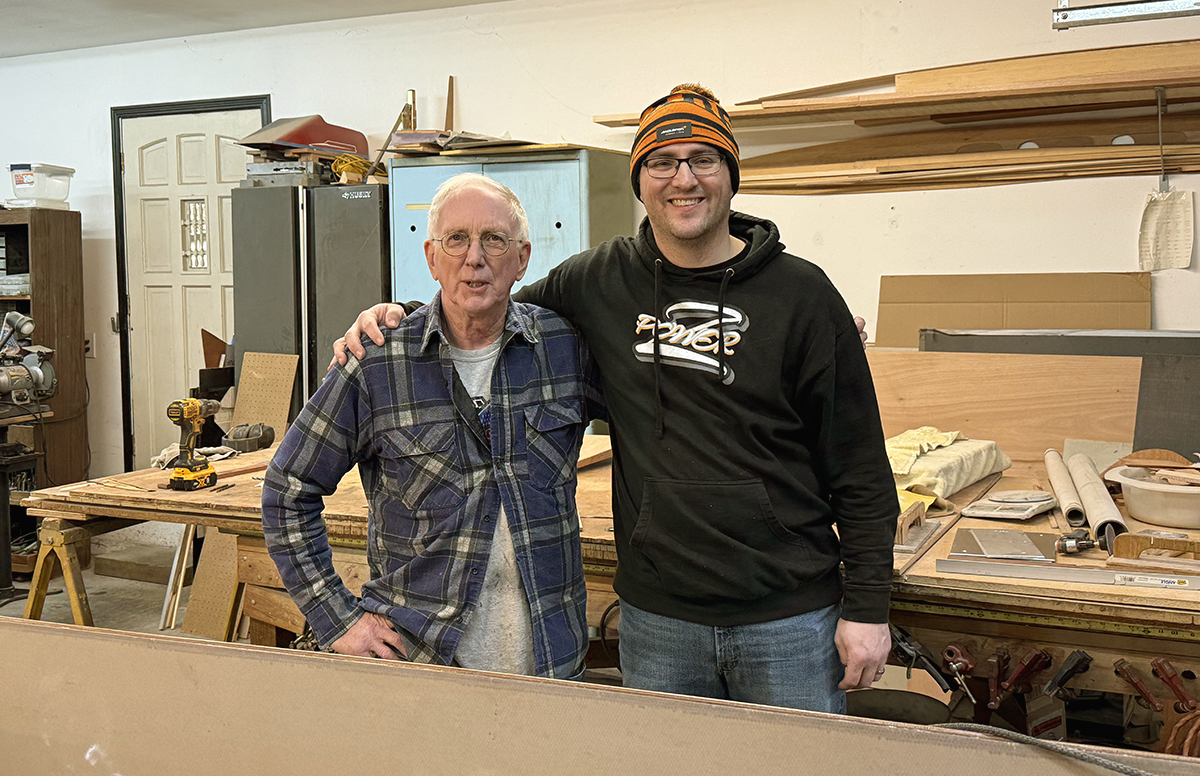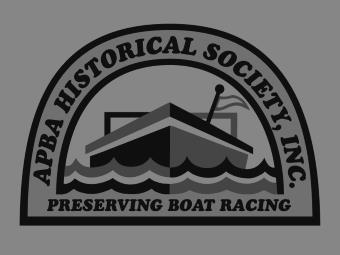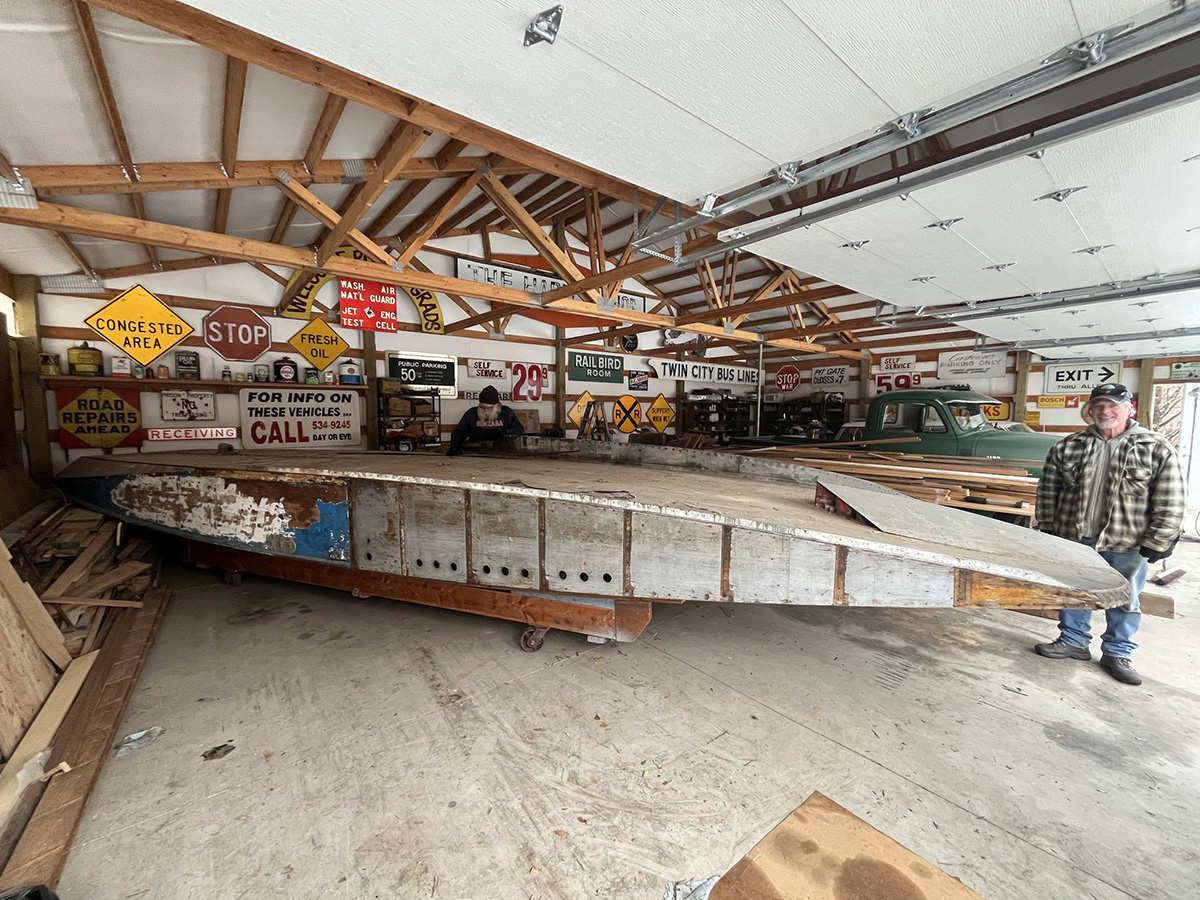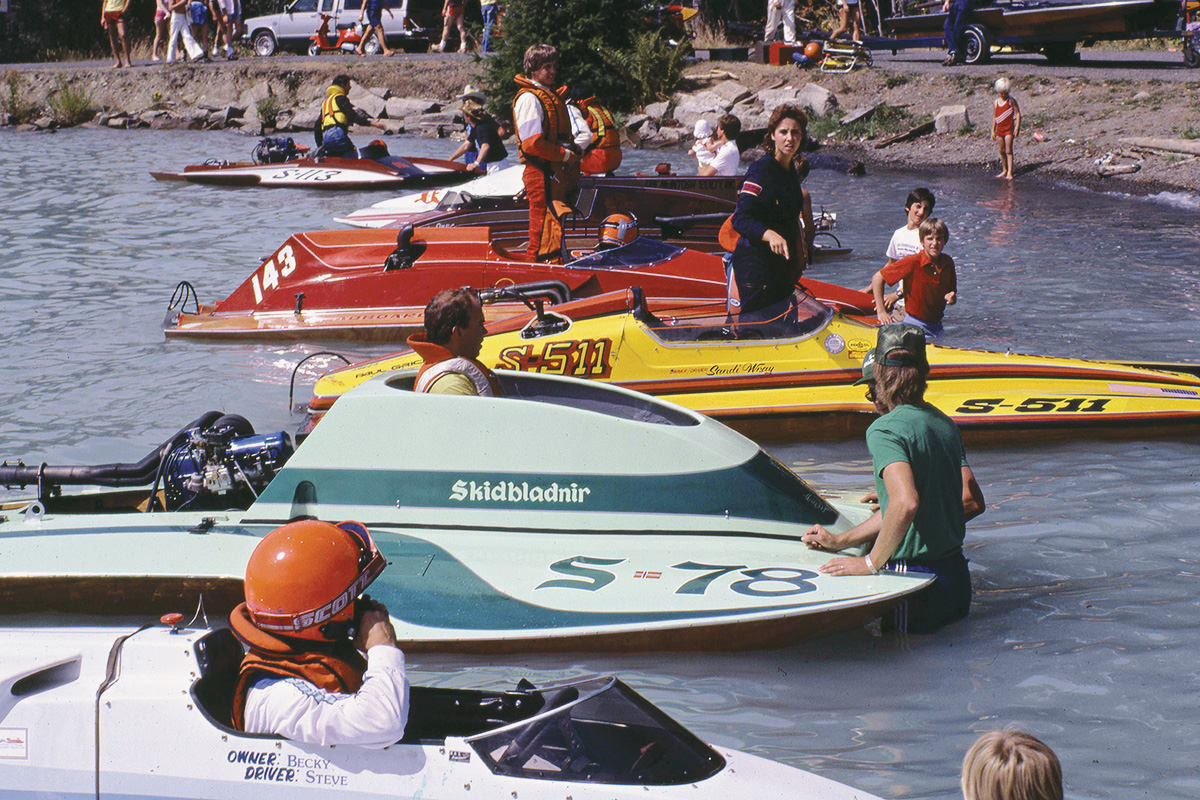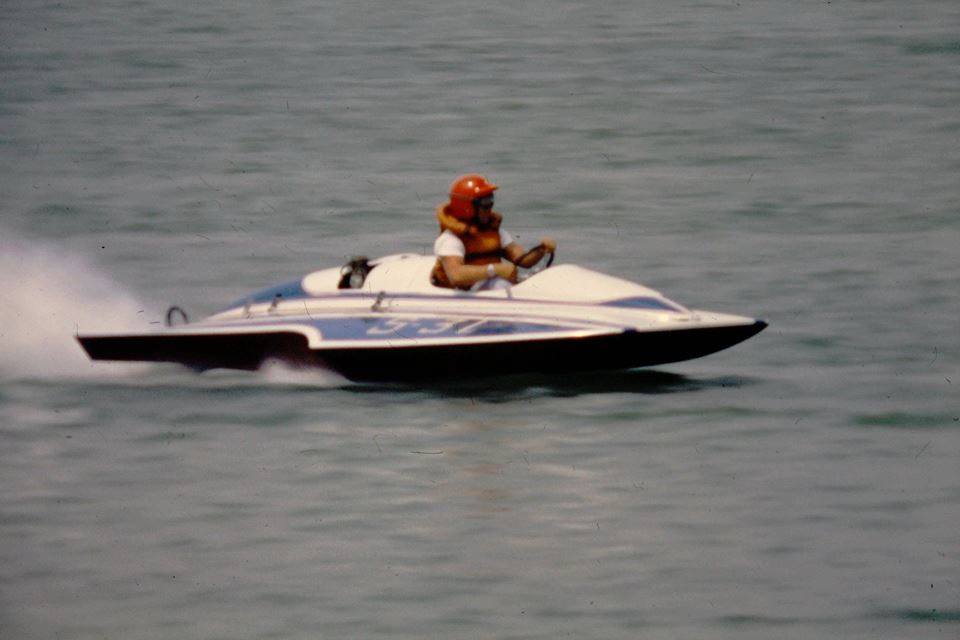A Field Trip with 460s
May 27, 2025 - 3:49pm
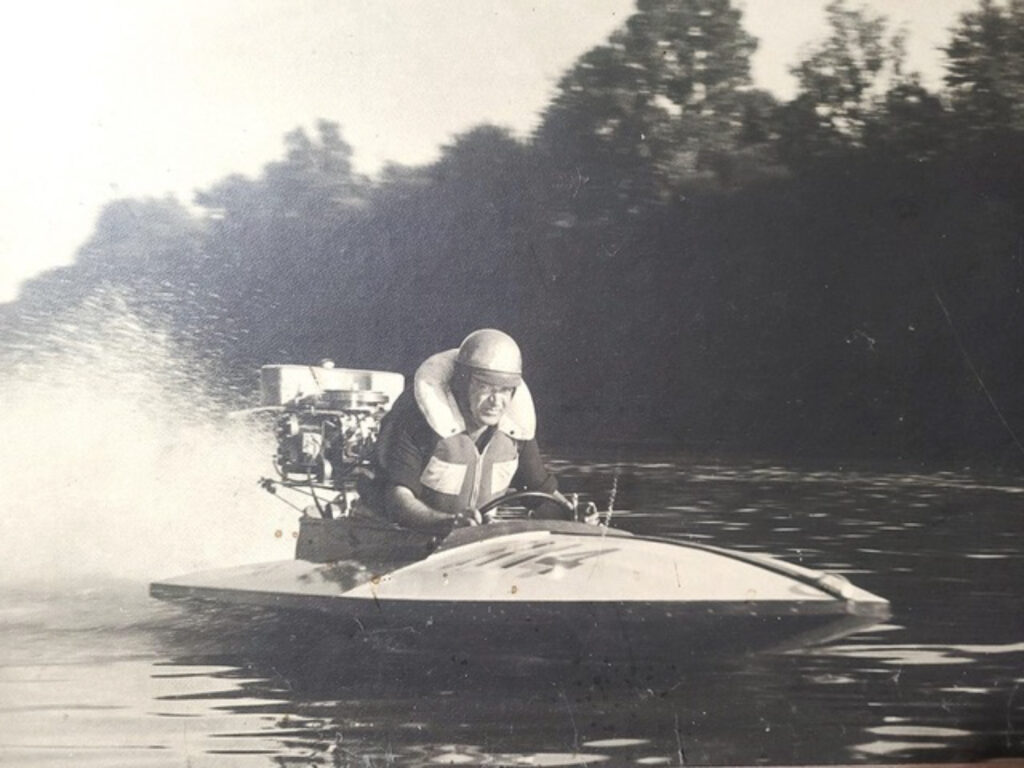
Hap Owens during a test
by Jay Walls
All my life I’ve wanted to be somewhere where I could run a 460 and have someone else running with me. In the early 2000s the Antique Outboard Motor Club had a meet at Constantine, Michigan. Fellow member Sam Vance showed up with a 1947 Speedliner Thunderbolt and a model 828 Elto 460, and he and I had planned on running together. I also had a 1947 Speedliner Thunderbolt and an 8003 OMC 460.
Well, when the time came to run, Sam’s motor fired right up and off he went. I, on the other hand, flooded my 460 and cranked for what seemed to be a bunch of my adult life. I finally had to get the rig up on a stand and get it started and cleaned out. After all the messing around (and by the way, Sam’s motor ran great and he patiently ran lap after lap waiting on me) I made it out, and we did get a couple of photos running together.
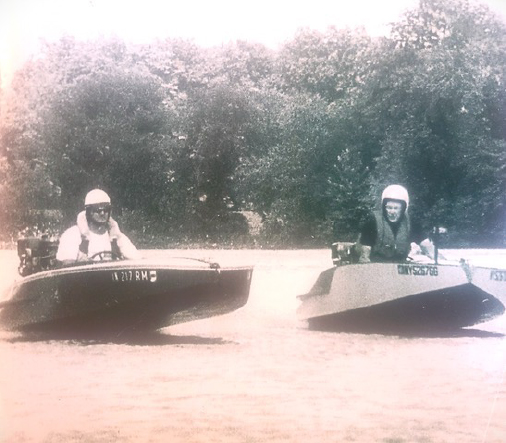
Jay Walls and Sam Vance actually running 460s together
You just don’t see 460s running together very often because of all the preparations you must go through to get ready. I figured the only way I was going to get this done after Sam and I had our run was to get two of them ready and have my son run the other one. We had tried it before in 2015 with alky motors. We got one running nicely, and a burnt piston on the other. It seems like there is always something that goes wrong with one of them.
The best way to get a 460 running well is to run it every weekend so you figure out all their little quirks. You have to figure out the initial carburetor setting for the best results, and the only way to do that is attempting to start it over and over. You only get one shot at (cold starting) and that setting isn’t going to be the same as starting a 460 that has been run and is up to operating temperature. Knowing all this, but still wanting to try to get it done, my son and I figured we’d forget trying to get to know the motors and all their individual little idiosyncrasies and just go for it.
We decided we couldn’t wait for another chance any longer, so this was to take place in 2018. Again, the site was to be the Constantine, Michigan AOMCI Super National Meet, so I started preparations on the motors in December of 2017. One of the motors—the one with the burnt piston—had to be taken down and cleaned and a new piston fitted. One of the problems with running anything on alky and castor is that over time, sitting, the wrist pins stick in the pistons, and you must take the engine down and clean everything. There is no substitute.
Anyway, all this was done but, again, one of the motors didn’t run right. I later learned that the coils I was trying to run were not compatible with other components in the ignition system. So that made it 0 for 2 attempts to run two 460s at one time.
I am going to try to run a 460 at the super meet again this year. All the prep work has been gone through again. There are chemicals today—aerosol sprays—that are strong enough to unstick a castor-stuck engine, but you still have to take it apart and clean everything. Rings will be stuck in the ring grooves. Wrist pins will be stuck to pistons. Rollers on the crank will have deposits on them that would make them skid if not cleaned. Rollers that skid will eat a crank in short order, so all these little details must be checked and re-checked.
So, let’s talk about when you actually do get a 460 running. You’ll be surprised at the torque. A 460, when new back in the 1930s, came with 13:19 gears in the lower units. You had to run a prop about 10 inches in diameter and with ruffly 18 inches of pitch for a hydro.
When that big pitch digs in, the torque of the engine would mash your feet into the back of the boat. In this day and age, drivers have all kinds of experience with torque from running different engines; but back in the 1930s no one had ever felt anything like what a 460 would do, mashing drivers back into the transom. Drivers would complain about hurting feet after running a 460.
Later, after the war, 460 racing was approved with 13:16 gears. The torque was tamed down somewhat and smaller pitches could be used.
Have you ever been kicked by a 460? A good kick will pull the knot through the wooden handle and leave splinters from the fragmented handle in your hand. Believe it or not, that is a good ending. If you have a large fresh hardwood handle and a new rope, the wood handle might not splinter, and if you’re big and tuff and hang onto the handle through the kick, you are the proud new owner of a hyperextended elbow that will hurt the rest of the weekend and maybe longer. A kick can break bones in an unsuspecting starter’s hand. It’s best to pull it like you are trying to break it. There have been all kinds of ways determined by experienced rope starters to come out of a kick with minimumal injuries, but no one has immunity.
The first time I ever ran a 460 we had just got it together and wanted to hear it run. We put it in the same old 55-gallon barrel we ran our other antiques in and fired it off.

L-R, Grandpa Fred (Dad’s father), my dad Emmett Walls, my brother Van and myself in 1978
It didn’t last long at all, and my dad told anyone who would listen, for the rest of his life, that the entire contents of the barrel went higher than the garage roof. We had to shut it off and refill. Another mistake we made was starting one in the basement of the house I grew up in. The loudest thing ever. It was like going to the drags.
F Class Racers and the Evinrude 460 by Jay T. Walls
There are a lot of versions of this engine out there. The first Evinrude 460 was sold in 1930 and was the Model 178. As with any new product put on the market, the first engines were different from the 178 offered at the end of the model year. The first 178s had a different gear ratio in the lower unit and the first 300 178s came equipped with a modified Speedifour crankcase, crankshaft and rods; and only had a bottom bearing on the crank. Motors 301 through the rest of the 460 production received the crankcase where the crankshaft’s vertical location is determined by either tightening or loosening the upper ball bearing mounting studs around the top of the case. This crankshaft locating method proved very reliable, with the tight clearances of the center main and the high RPM that was expected.
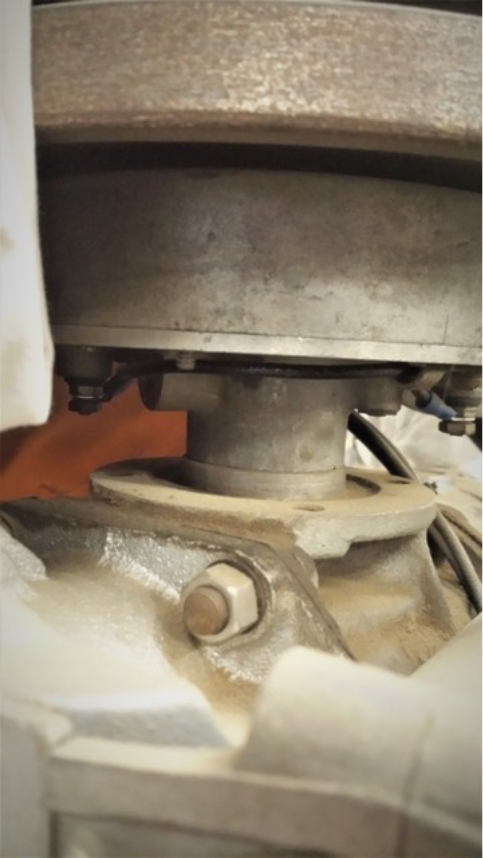
Early 178 with modified Speedifour crankcase assembly.
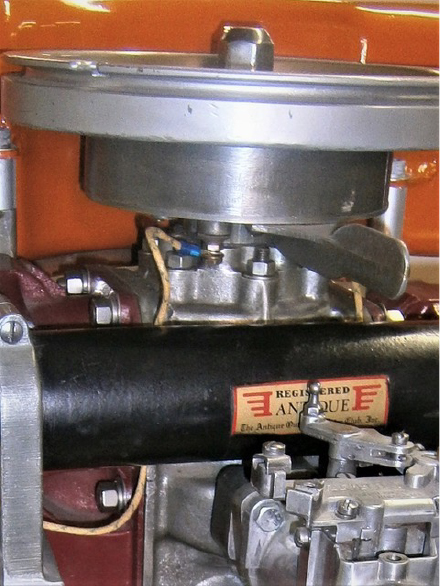
Later 178 with modern 460 style crankcase
This first 460 came with a dished flywheel that had rope notches in it for starting. This dished flywheel had three variations, the first being only one hole in the dished section of the flywheel which indicated where the keyway was. The second version had the original first hole and two larger holes in the dish, which were used to set the points. The third version had four holes in the dished section and the fourth was used for removing the covers on the timer plate.
The first 178 model 460s came equipped with a Tillotson carburetor. Somewhere along the line, a Schebler carburetor became available on the 1931 804.
This same parts-sharing phenomenon happened with the 1931 model 460s, as lots of parts left over from the 178s were used up on the first 804s. The first 122 model 804s were fitted with the leftover dished flywheels of the 178, and also the same lower unit. From serial number 122 to 500 of the model 804, the lower unit changed to a split design but still with the same gear setup of the first 460s. After serial number 500 of the model 804, the lower unit was updated to the split lower unit with the gear setup that was used for the rest of the 460 production run.
In 1932 the 460 model number was 826. Evinrude also announced the option of a motor with a Linkert carburetor. In 1933, the 460 model was 828. In 1934 Evinrude revamped their model number system to a four-digit scheme, and thus the model 8000 460 was offered.
The 1935 model number was 8002. This model also marks the first offering of detachable-head cylinders as an option. The first 500 production units of this 1935 model were all flathead. From serial number 500 on, the buyer could pay an extra $25.00 and get removable-head cylinders. This option remained active until 1938.

8003 460 with optional removeable head cylinders
Each year from 1935 until 1939, the model number went up one digit. The 1938 460 model 8005 marked the last year the 460 came standard with the flathead cylinders. In 1939 the 8006 model 460 was made, and that model designation continued until Evinrude discontinued the manufacture of the racing 460 sometime in 1941.
Some interesting notes are that Evinrude made dual ignition 460s—models 827 and 829 in years 1932 and 33 respectively—and there is no 8001 460 because in 1934 Evinrude used that model number for its X class racer.
So, as you can see, Evinrude built the factory 460 racer for about 12 years.
There are all sorts of F class racing versions of the 460 out there, as lots of parts from the service Big Fours, Stormboat motors and Johnson P-500 pumpers were interchanged. After the war, Randolph Hubbell offered what he called a ”Free for All” motor, which incorporated lots of Evinrude Stormboat and Johnson P500 pumper parts that he could obtain at military surplus outlets.
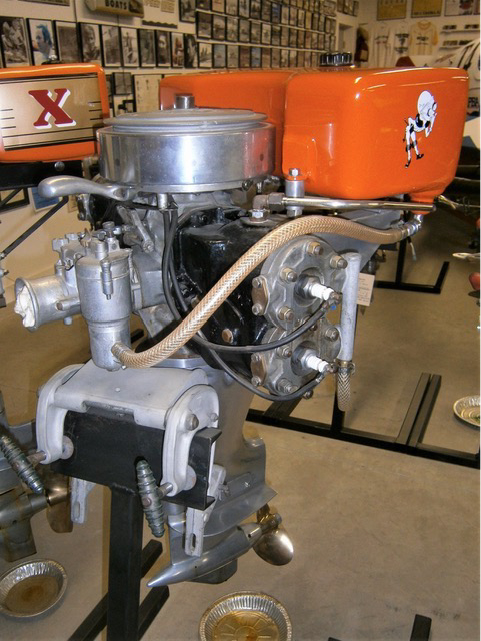
Hubbell Free for All Racer p1 orange
What it boiled down to was that racers would build up racing engines from the stuff they could get their hands on. These 60 cubic inch monsters were campaigned in F Class and, back then, also in the “Free for All.” After all the classes had run, they would run a “Free for All” class in which, as the name implies, a racer could run whatever he wanted.
Now might be a good time to document all the racing classes offered back in the 1930s through the 1950s. The smallest was the Midget class, M, which ran the Evinrude Midget at 7 1/2 cubic inches. Class A was 7 ½ to 15 cubic inches, Class B was 15 to 20 cubic inches, Class C was 20 to 30 cubic inches, Class D was 30 to 40 cubic inches, Class E was 40 to 50 cubic inches, and the F Class was 50 to 60 cubic inches. The only larger outboard class was Class X, which was simply anything over 60 cubic inches.
Karl Williams: From available information, we can name four drivers still with us who actually raced 460 engines.
Listed senior to youngest:
Bill Wells, London, Ontario, Canada
Bruce Summers, Lake Villa, Illinois
Dwight Malhiot, Bremerton, Washington
Dave Riser, Covington, Georgia
Featured Articles

